 Image search results - "mino" Image search results - "mino" |

Minowa Station on the Hibiya Line 三ノ輪駅
|
|

A short walk away from the subway station is the "Joyful Minowa" shopping arcade.
|
|

Entrance to "Joyful Minowa" shopping arcade.
|
|

"Joyful Minowa" shopping arcade.
|
|

"Umi no Ko" (Child of the Lake) Lake Biwa training boatThe bow of Shiga Prefecture's "floating school." The name of this boat was obviously taken from the song. The boat is owned by Shiga Prefecture and used to educate elementary school kids about the lake. Since 1983, this ship has been serving as a floating school for kids where they stay overnight and spend two days conducting experiments to learn more about the lake. Picture was taken at Hikone Port.
|
|

Gate to Minowa-bashi Station on the Tokyo Toden Arakawa Line。 東京都電 荒川線 三ノ輪橋駅
|
|

Minowa-bashi Station
|
|

"Umi no Ko" (Child of the Lake) Lake Biwa training boat for kids
|
|

Minowa-bashi Station platform for departing trains
|
|

Route map with numerous stations
|
|

Trains come quite often and passenger traffic is good.
|
|

Many flowers adorn the route, especially roses. This one is called Princess Aiko.
|
|

Certificate for Minowa-bashi Station being one of the best 100 Train Stations in the Kanto Area
|
|
|

A streetcar arrives Minowa-bashi Station
|
|

A streetcar leaves Minowa-bashi Station
|
|

Destination: Waseda
|
|

Inside the streetcar at the front. Pay when you board. 160 yen per ride for any distance.
|
|

All-day pass available for 400 yen.
|
|
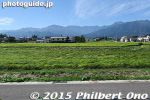
Nice scenery from JR Matsumoto Station to Hotaka Station.
|
|
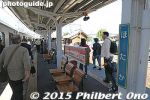
JR Hotaka Station is the nearest station to the Daio Wasabi Farm.
|
|
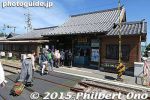
JR Hotaka Station
|
|
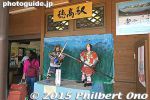
JR Hotaka Station
|
|
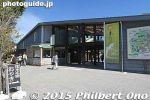
One of Japan's largest wasabi farms is a tourist attraction. Clean water from the mountains provide an ideal environment to grow wasabi.Entrance to Daio Wasabi Farm. Open: 9:00 am–5:20 pm (closes at 4:30 pm during Nov. to Feb.). Free admission
|
|
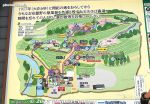
Map of Daio Wasabi Farm. It is quite expansive.Address: 〒399-8303長野県安曇野市穂高3640
3640 Hotaka, Azumino, Nagano
|
|
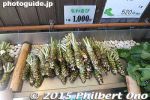
Wasabi for sale. It's a root plant.
|
|
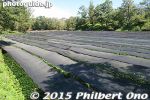
You can walk around the wasabi fields which look quite vast. They are shaded in the warmer months.
|
|
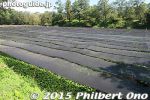
Clean water flows through the fields.
|
|
|
|
|
|
|
|
|
|
|
|
|
|
|
|
|
|
|

Wasabi plants
|
|
|
|
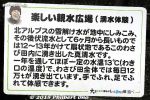
You can sample the farm's cold spring water.
|
|
|
|
|

Busts of the wasabi farm's founding pioneers.
|
|

Daio Wasabi Farm's founding pioneers. The founder was Fukazawa Yuichi (1886-1941).
|
|
|
|

Daio Wasabi Farm's water originates from snow melt from the Northern Alps. It flows from a spring within the farm.
|
|
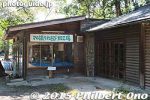
A little factory where they process wasabi plants.
|
|
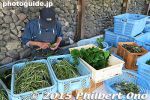
Processing wasabi plants, cutting off the leaves, etc.
|
|

The wasabi plants are shaded with black netting to block sunlight and prevent the water temperature from rising above 15 C.
|
|
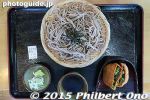
A restaurant on the farm served soba noodles with wasabi.
|
|
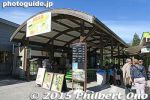
Near the entrance/exit is a souvenir shop.
|
|
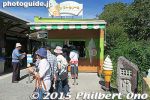
Ice cream time
|
|
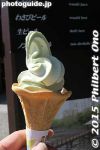
Wasabi soft-serve ice cream. Quite good.
|
|

Other wasabi-flavored things to eat.
|
|
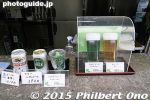
Wasabi beer
|
|

Wasabi-colored benches.
|
|
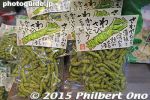
Wasabi karinto
|
|
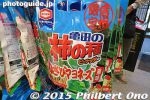
Wasabi snack
|
|
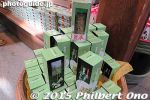
Wasabi furikake
|
|
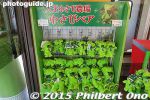
Wasabi Mascot
|
|
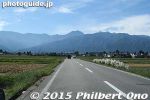
Taxi ride back to Hotaka Station from Daio Wasabi Farm.
|
|

JR Hotaka Station
|
|
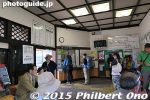
Inside JR Hotaka Station.
|
|
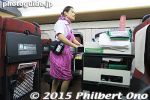
Cabin attendant on the Nagano shinkansen.
|
|
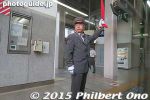
Train station conductor on the Nagano shinkansen.
|
|

Also called Tsukioka Castle (月岡城), Kaminoyama Castle is today a 1982 reconstruction of the castle tower near the original site. The castle as seen from the train.
|
|

Kaminoyama Onsen Station is the closest train station to Kaminoyama Castle. The station building is obviously designed after the castle.
|
|

Kaminoyama Onsen Station
|
|

Welcome to Kaminoyama Onsen (spa).
|
|

Kaminoyama Onsen Station used to be called Kaminoyama Station. The station's name was changed to Kaminoyama Onsen after the Yamagata Shinkansen was completed in 1992. This building was completed in June 1994.
|
|

Even the police box (koban) near the Kaminoyama Onsen train station is designed after the castle.
|
|

Kaminoyama's manhole design does not have a castle motif. Yamagata Pref.
|
|

Kaminoyama Castle in sight.
|
|

Way to Kaminoyama Castle. About a 10-min. walk from the train station.
|
|
|

Marker showing the former site of Kaminoyama City Hall. This is already within the former castle grounds.
|
|

The castle and the area surrounding it is a park called Tsukioka Park.
|
|

Kaminoyama Castle, Yamagata Pref. The building is four stories high reconstructed in Nov. 1982. The design is based on the castle existing in 1535.
|
|

Admission 400 yen.Open 9 am to 4:45 pm. Closed in late Dec. and early Jan. and during the third week of July from Mon. to Fri.
|
|

Kaminoyama Castle's first lord was Buei Yoshitada. The castle functioned as the Mogami clan's southernmost defense against the Date and Uesugi clans. The castle was dismantled in 1692.
|
|
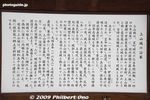
About Kaminoyama Castle in Japanese.
|
|

Top floor of Kaminoyama Castle leads to the veranda. Photography is not allowed inside the castle building.
|
|

Veranda of Kaminoyama Castle.
|
|

View from Kaminoyama Castle's top floor. It was a cloudy day when I visited.
|
|

Looking toward Yamagata city.
|
|

Yamagata shinkansen stops at Kaminoyama Onsen Station.
|
|

Kaminoyama Onsen Station. The tall building is in neighboring city Yamagata.
|
|

The small building near the center is a foot bath shed.
|
|

Tsukioka Park
|
|

Next to Kaminoyama Castle is this foot bath with hot spring water.
|
|

The foot bath at Kaminoyama Castle looks very inviting, but the water was scalding hot when I was there. I got mild skin burns on my feet. You don't ever think that the water is too hot. All the foot baths I've tried were all suitable temperatures
|
|

Kaminoyama Castle and foot bath. This is the only foot bath in Japan which was too hot. Before entering an empty foot bath, feel the water temperature with your hand.
|
|

Another foot bath nearer to the Kaminoyama Onsen Station. This was also scalding hot.
|
|
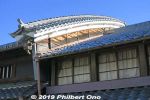
Mino in Gifu has a traditional townscape of "udatsu" homes. Udatsu is a decorative firewall on the side of the home's roof. Townscape is a rectangular area of residential streets lined with traditional homes. A few are open to the public.Near Minoshi Station on the Nagaragawa Railway. This area is a National Important Traditional Townscape Preservation District (重要伝統的建造物群保存地区).
|
|
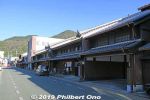
Mino and this townscape was part of the Mino castle town developed by Daimyo Kanamori Nagachika (1524–1608) who lived in nearby Ogurayama Castle. You can park your car somewhere and walk around the area.National Important Traditional Townscape Preservation District.
|
|
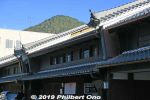
Mino basically developed as a merchant's town up to the late 19th century. Udatsu roof firewall in Mino, Gifu.
|
|
|
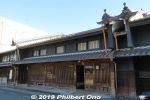
Hirata Family residence 平田家
|
|

Signboards explain in English the most significant homes. This is the Hirata Family residence.
|
|

Inside Hirata Family residence
|
|
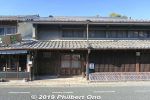
Former Honjin lodge for VIPs. Suzuki Kohei residence.
|
|

About Suzuki Kohei residence.
|
|

Kosaka Family Residence of a sake brewing family. National Important Cultural Property. 小坂家住宅
|
|
|

About Kosaka Family Residence. 小坂家住宅
|
|
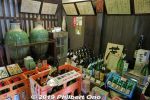
Inside Kosaka Family Residence is a sake shop.
|
|
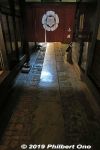
Kosaka Family Residence
|
|
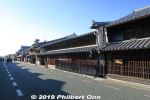
Udatsu roofs in Mino, Gifu Prefecture.
|
|
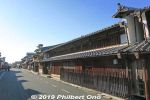
Yoshida Kobo
|
|

Yoshida Kobo
|
|
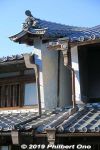
Yoshida Kobo udatsu roof firewall.
|
|
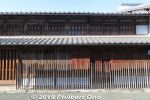
Former Imai Residence 旧今井家
|
|
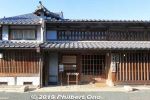
Former Imai Residence used as the Mino History Museum. Free admission.
|
|

About Former Imai Residence. 旧今井家
|
|
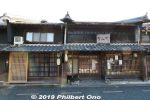
Tomiya
|
|
|

Markers commemorating a visit by the Emperor and Empress and Crown Prince.
|
|
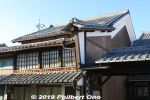
Udatsu roof firewall in Mino, Gifu.
|
|
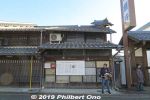
Juroku Bank
|
|

Sign about Sugihara Chiune who was born in Mino, Gifu near here. Sugihara is famous as the Japanese diplomat in Lithuania who gave transit visas to Jews fleeing the Holocast during World War II.
|
|

Sign about Sugihara Chiune who was born in 1900 at Kyosenji Temple in Mino, Gifu near here. 杉原 千畝
|
|
|
|
|
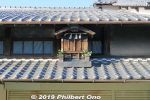
Little external shrine, Akiba-sama. 秋葉様
|
|

Matsuhisa Eisuke paper store
|
|
|
|

Mino Tourist information office has tourist pamphlets. 美濃市観光協会「番屋」
|
|
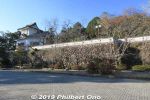
Also visited Ogurayama Castle on a hilltop nearby. 小倉山城跡
|
|

Ogurayama Castle on a hilltop. Originally built by Kanamori Nagachika (1524–1608) 金森長近 in 1605 as a retirement residence. Now part of Ogura Park in Mino, Gifu Prefecture. 小倉山城跡The turret is a reconstruction.
|
|
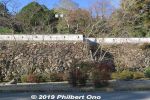
Ogurayama Castle on a hilltop. Kanamori Nagachika (1524–1608) was a daimyo who developed the Mino castle town. 小倉山城跡
|
|
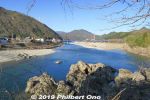
Nagara River in Mino, Gifu.
|
|
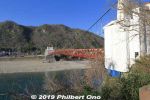
Mino Bridge over Nagara River. Until 1965, vehicles used to cross the bridge. 美濃橋
|
|
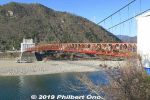
Built in 1916, Mino Bridge is Japan's oldest surviving modern bridge and a National Important Cultural Property. It's now a pedestrian and bicycle bridge 113 meters long. 美濃橋
|
|
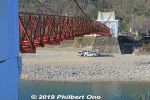
Mino Bridge over Nagara River. It has a wooden floor. It's being renovated so we couldn't cross it in Jan. 2019. Jumping off this bridge into the river can be fatal. 美濃橋
|
|
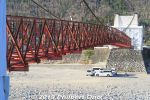
Mino Bridge over Nagara River. (Under renovation.) 美濃橋
|
|
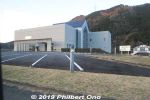
Mino Washi Museum has exhibits about washi history, washi making, and washi paper art. It also offers washi paper-making lessons. Make your own washi postcards, etc. Anybody can do it. Open 9 a.m.–5 p.m., closed Tue. Admission ¥500 (¥250 for elementary school and jr. high school). From Mino-shi Station, take a taxi. The museum is far from the train station because it needs to be near a clean river. Parking available.
|
|
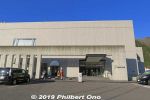
Entrance to Mino Washi Museum (Mino Washi no Sato Kaikan). It was renovated in April 2017, so it looks new. There are three floors, including a basement floor.
|
|
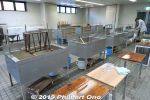
Basement floor has this paper-making workshop where you can try making your own washi paper. It can be a single sheet 33x45cm), 6 postcards, or diploma. Takes less than an hour. Fees are ¥500 to ¥800. ワークショップ - 紙すきの体験
|
|
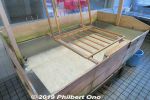
A large vat (sukifune) filled with washi fibers floating evenly in the water.
|
|
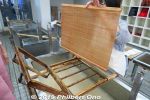
Our washi instructor taught us how to do it using a wooden mold (keta 桁) supporting a screen.
|
|
|

Dump the mold into the vat and swish it left/right and forward/back evenly.
|
|
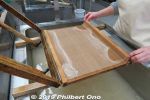
This is what happens when you don't do it right. Uneven paper.
|
|
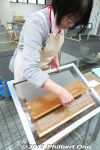
Transferring the paper sheet.
|
|
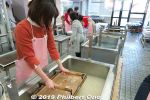
We tried making a washi sheet.
|
|
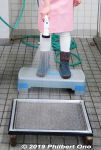
We could put a steel grating having a template design over the washi sheet and sprinkle water over it to impress the grating template on the the paper.
|
|
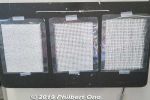
The streel grating makes these patterns on the paper. We could choose one of these.
|
|
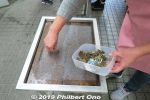
We could also put small leaves on the paper.
|
|
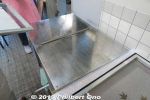
Paper vaccuum dryer. The slit sucks water from the paper.
|
|

Paper vaccuum dryer sucking water from the wet washi paper moving across the slit underneath. Vey neat.
|
|

The paper is them placed on this water heater to further dry the paper. We could take home our washi after 30 min.
|
|

My Mino washi paper.
|
|

Washi making lessons. You can make an A4 sheet, postcards, etc.
|
|

Steps to make the washi fibers from mulberry plants, kozo, mitsumata, and ganpi. Bark is stripped and soaked in river water. Kozo is then boiled. Specks of impurities are picked off. The bark is mashed.
|
|
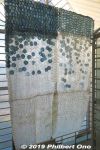
The museum has exhibition rooms and spaces to display washi artwork.
|
|
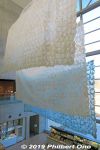
On the 1st floor below, there's a gift shop where you can buy Mino washi paper products. It's also where you can sign up for a washi papermaking lesson.
|
|
|
|
|

Washi artist is Akiyama Nobushige.
|
|
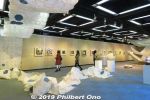
On the 2nd floor, Exhibition Room I displays washi art.
|
|
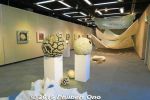
Exhibition room displaying washi art.
|
|

Mino Washi Museum, Gifu
|
|
|
|
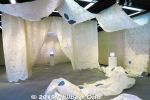
Mino Washi Museum, Gifu
|
|

Mino Washi Museum, Gifu
|
|
|

Also on the 2nd floor, Exhibition Room II displaying washi used at home and in practical and commercial products.
|
|

Exhibition room displaying washi used in practical and commercial products.
|
|
|
|
|
|

Japanese style
|
|

Yarn and speaker cones made of Mino washi.
|
|

About washi yarn.
|
|
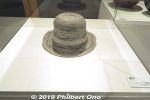
Washi hat
|
|
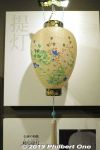
Washi paper lantern
|
|

Mechanized papermaking
|
|

The spread of paper
|
|

Paper for everyday use
|
|

Wash for various purposes
|
|

Washi uchiwa fans
|
|
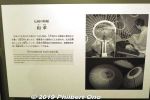
Washi umbrellas
|
|
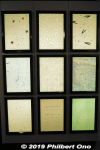
Mino washi postcards
|
|

Mino mascots
|
|

General information for visitors. The museum has three floors.
|
|
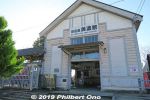
Mino Station on the old Meitetsu Mino-cho Line in Gifu Prefecture closed in April 1999 and has been preserved as a Registered Tangible Cultural Property (登録有形文化財) since 2005. The train line was abolished in March 1999. However, the charming station building still stands and open to the public, complete with a few trains on display. Mino Station first opened here in Oct. 1923. (Not to be confused with other Mino Stations in Japan.) Short walk from Minoshi Station (美濃市駅) on the Nagaragawa Railway. 名鉄美濃町線
|
|

Monument by Mino city explaining the history of Mino Station. This station has been preserved as a testament to the hard work by forebearers for this old train line.
|
|
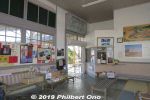
Inside Mino Station in Mino, Gifu Prefecture.
|
|
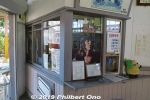
Mino Station ticket office.
|
|

Mino Station waiting room.
|
|
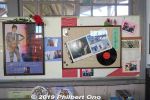
Pop singer Noguchi Goro is from Mino, Gifu.
|
|
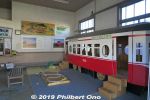
Play area for kids.
|
|

Three old trains are on display. You can go inside each one.
|
|
|
|
|
|
|
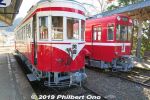
Mo 512 and Mo 601 trains.モ512およびモ601
|
|
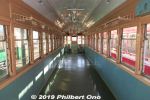
モ512
|
|
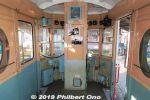
Driver's cab in モ512.
|
|
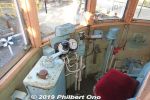
Driver's seat in モ512.
|
|
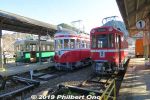
Mino Station, Gifu, with three retired trains on display.
|
|
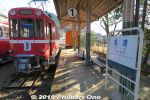
Mino Station, Gifu. モ601
|
|
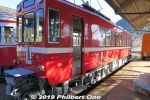
モ601
|
|

Inside モ601 train.
|
|
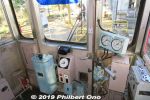
Driver's seat in モ601.
|
|
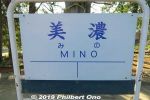
Old train station sign.
|
|
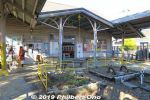
Mino Station as seen from the platform.
|
|

Inside the Mino Station office is now a shop selling old J-pop records from the 1960s and 1970s.
|
|

Inside the Mino Station office is now a shop selling old J-pop records from the 1960s and 1970s. Huge collection.
|
|

45 rpm single records by J-pop idol singers from the 1970s.
|
|
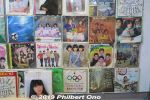
Pink Lady, Candies, Iwasaki Hiromi, etc.
|
|
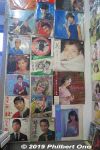
1960s J-pop singers.
|
|
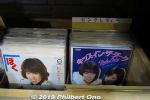
Records also on sale.
|
|
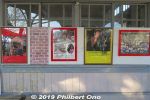
Pop singer Noguchi Goro posters.
|
|
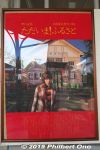
Pop singer Noguchi Goro posters. He was a super popular idol singer in the 1970s in Japan along with Go Hiromi and Saijo Hideki.
|
|
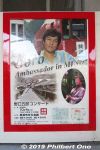
Pop singer Noguchi Goro posters.
|
|

Ota-juku was the 51st shukuba lodging town on the old Nakasendo Road linking Tokyo (Edo) and Kyoto. The old Nakasendo Road and some remnants of the shukuba still remain. Ota-juku is adjacent to Kiso River and one of the 17 Nakasendo lodging towns in Gifu Prefecture. This Hiroshige woodblock print of Ota-juku shows the Kiso River crossing to Ota-juku, one of the most difficult segments of the Nakasendo.
|
|

By 1843, Ota-juku was about 680 meters long with one Honjin, one Waki-Honjin (partially open to the public), 3 toiyaba, 20 hatago inns, and 118 homes. 505 people lived in Ota-juku.A major highlight was when Princess Kazunomiya (1846–1877) arrived and stayed in Ota-juku on Oct. 27, 1861 on her way to Edo/Tokyo to marry the shogun. She had such a huge entourage that it took them 4 days to pass through Ota-juku.
|
|

There are signboards in English. This is at the entrance to Ota-juku Nakasendo Museum.
|
|
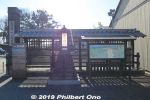
Entrance to Ota-juku Nakasendo Museum. Parking also available here.
|
|

Tourist walking map of Ota-juku. From Ota-juku Nakasendo Museum, most sights are within walking distance.
|
|

Larger map of Ota-juku.
|
|
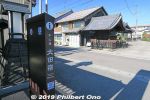
Across from Ota-juku Nakasendo Museum is the original front gate for the Ota-juku Honjin. The Honjin was the lodging town's centerpiece where VIPs like daimyo lords and Imperial family members would stay when passing through.
|
|
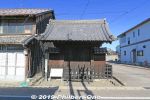
Ota-juku Honjin Gate front view. Too bad the Honjin is gone. Ota-juku's Honjin was rebuilt anew to lodge Princess Kazunomiya when she was to travel from Kyoto to Tokyo to marry Shogun Tokugawa Iemochi in 1861. 太田宿本陣門
|
|
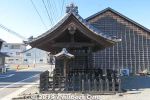
Ota-juku Honjin Gate side view. This is not the original location of this gate. It was moved here during the 1920s or 30s. The Honjin was originally near the still existing Waki-Honjin. 太田宿本陣門
|
|
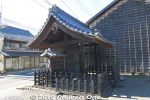
Ota-juku Honjin Gate. In Oct. 2002, the gate was diassembled and repaired before being reassembled. 太田宿本陣門
|
|

Ota-juku Honjin Gate rear view. 太田宿本陣門
|
|

Ota-juku Honjin layout. The original Honjin was a large Japanese-style mansion with many rooms. It was in the center of Ota-juku and operated by the Fukuda family whose head also served as the Ota-juku headman.In the Meiji Period, the Honjin was used as the Ota Town Hall.
|
|
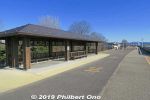
Kiso Riverside rest house. Great for a walk or cycling.
|
|
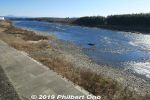
Ota-juku is parallel to Kiso River 木曽川
|
|
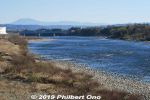
Kiso River with Ota Bridge where travelers crossed the river in the old days on the Nakasendo Road. 太田の渡し場太田橋
|
|
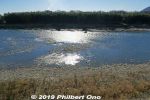
Kiso River
|
|
|
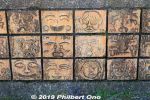
Relief sculpture by local kids.
|
|
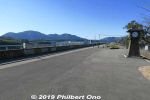
Wide Kiso Riverside walkway.
|
|

Ota-juku Nakasendo Museum and reconstruction of manga artist Okamoto Ippei's house. 太田宿中山道会館 + 糸遊庵
|
|

Ota-juku Nakasendo Museum 太田宿中山道会館
|
|
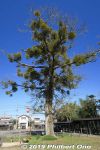
Tree of Love. The leaves are ball shaped. Chinese hackberry in Ota-juku, Minokamo, Gifu.
|
|

About the tree
|
|

About Chinese hackberry and mistletoe.
|
|
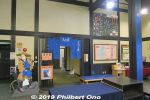
Inside Ota-juku Nakasendo Museum. Free admission.
|
|
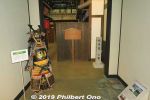
Way to museum exhibits explaining local cultural history.Open 9 am to 5 pm, closed Mon. and Dec. 29–Jan. 3. https://kaikan.ootajuku.net/
|
|

Museum rules: No smoking, eating or drinking. Unfortunately, there's no English.
|
|
|
|